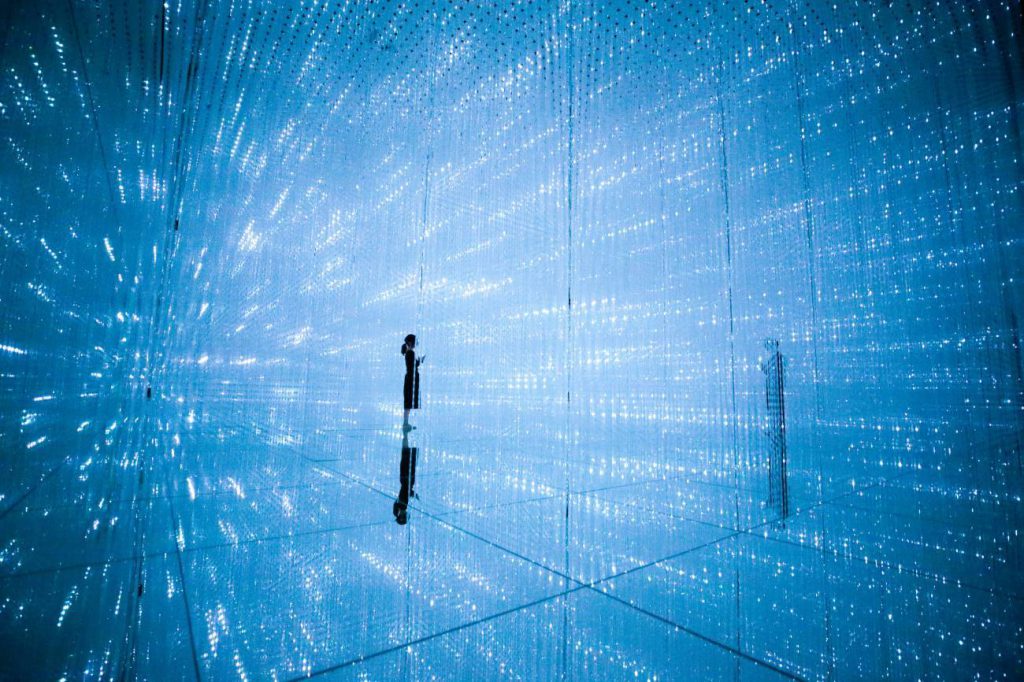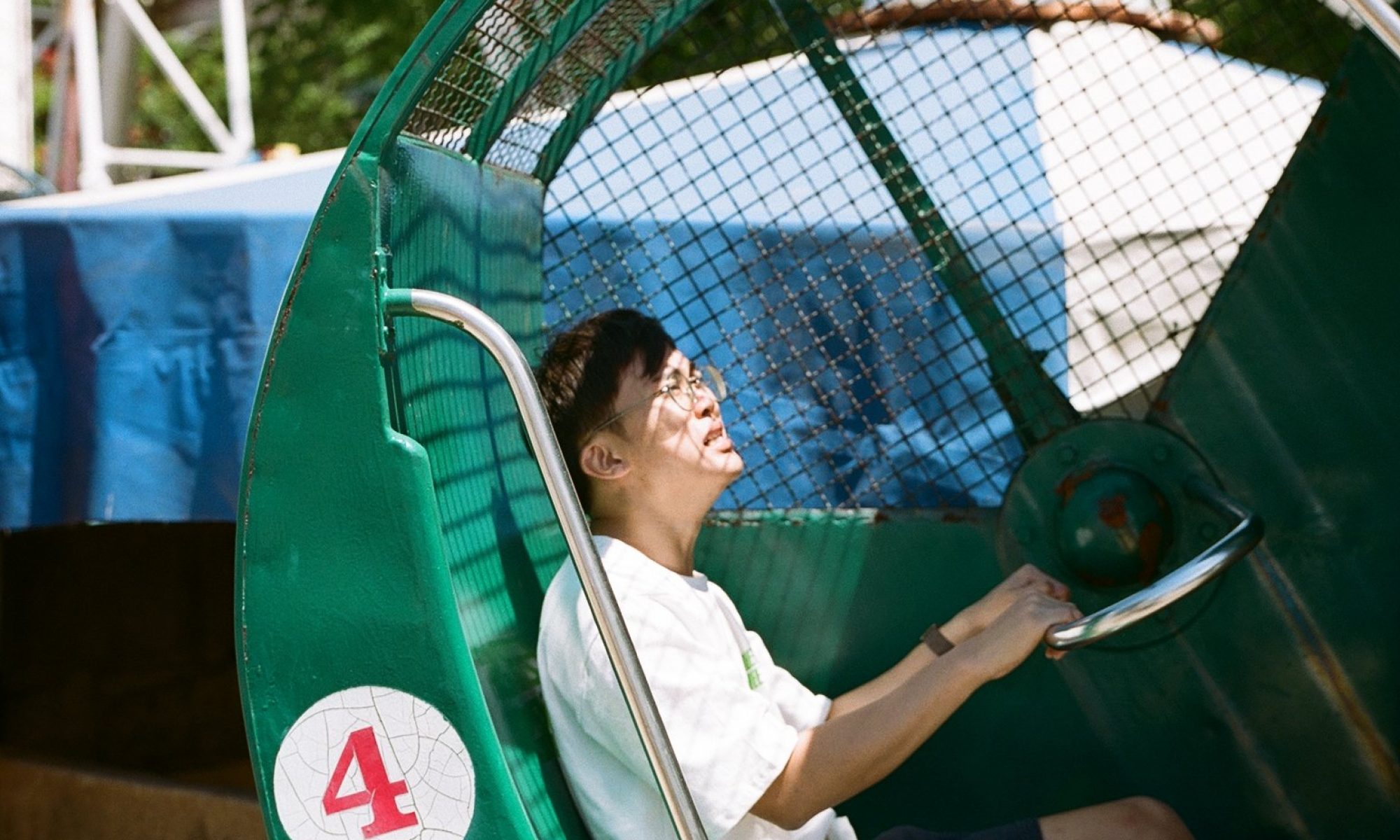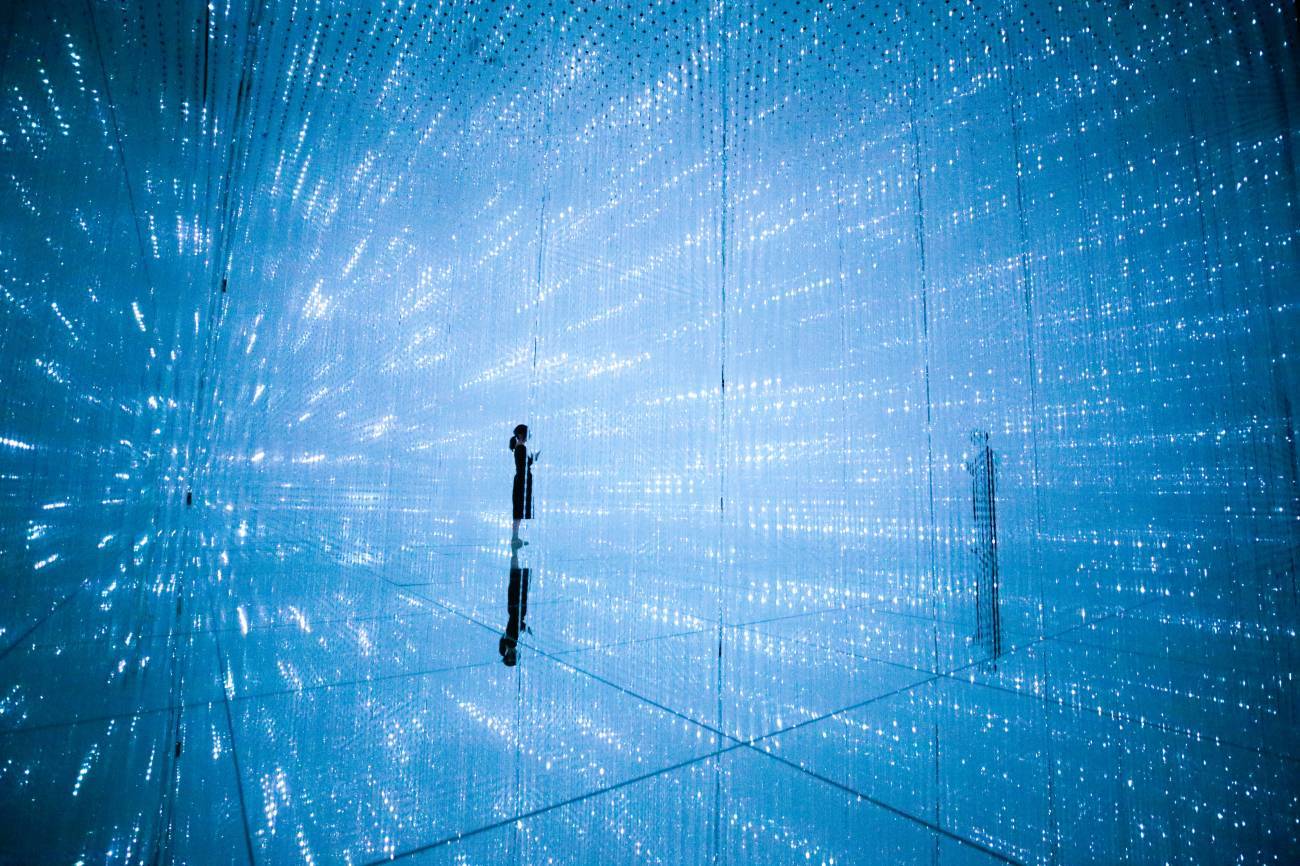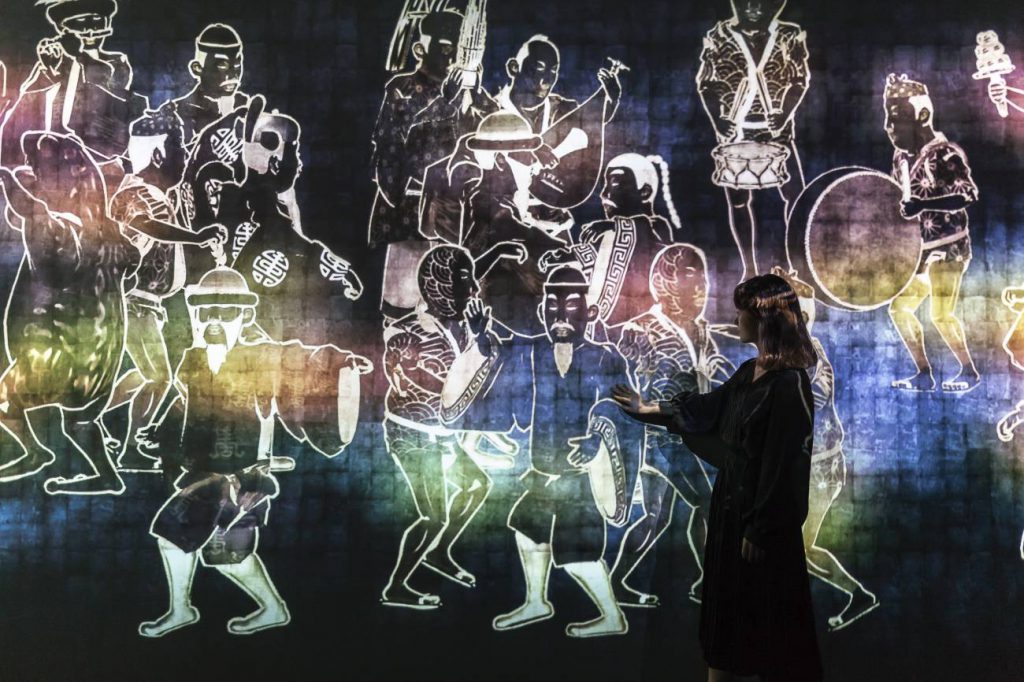I will be looking at the artwork ‘The Infinite Crystal Universe’ by teamLab.
Here’s the artwork description:
Pointillism uses an accumulation of distinct dots of color to create a picture, here light points are used to create three-dimensional objects. This interactive artwork expresses the universe through accumulated light points that spread infinitely in all directions.
People can use their smartphones to select elements that make up the universe by dragging them and releasing them into the The Infinite Crystal Universe. Each element released influences that of other elements and is influenced by the presence of people in the space. The work is created by people in the space and is thus continuously changing forever.
I really love love love this artwork because I also have a personal story tied with this artwork. I visited Art Science Museum alone before entering ADM after experiencing a down period of my life. It was a great experience going there alone as I have all the time to myself interacting with all the artworks.
The one that strike me most was, of course, this artwork. I walked through the curtains of LED thinking it would just be an “Instagram” artwork (seen it online too many times). When I reached the end, I saw an Ipad and the text description of the artwork, and decided to meddle with it. I apparently sent out a ‘star’ which appear in the artwork itself, and it exploded, creating a visual and auditory spectacle. Meanwhile, the crowd of photo-takers are just amazed by the change in environment, unaware that I, 1 person, with 1 swipe, just did all these. It was an overwhelming experience.
What I felt was that, with a small action, I can feel so powerful and yet also feel so lonely. I literally teared. Like really, words can’t describe what I felt.
SO. I feel so connected with this artwork and I also like astronomy so the whole idea of space, planets, and stars are very interesting to me.

I chose this artwork as its intend is not just straightforward, but also very impactful. My interpretation is that, on a personal level, we can see how small we all are, yet, how easily we can impact the world around us. On a whole, the interactivity is very apparent and forms some kind of relationship between the “universe maker” and the rest of the audience. There is some sense of immersion too, as audiences gets up close with the LEDs.
Through this artwork, teamLab expresses their method of creating immersive works that dissolve borders between viewer and works which allowed for quote: ‘continuous dynamic behavior, visual phenomena, and the ability to transform the canvas’.
‘by doing so, the boundaries between the body and the work become ambiguous, which may become the starting point for people to think about their relationship with the world.
interactivity, immersion, constantly changing, feedback loop, audience > work > other audience > work > etc
teamlab planets tokyo: a ‘body immersive’ exhibition of all-encompassing digital art
http://exhibition.team-lab.net/siliconvalley/art/art01.html
https://planets.teamlab.art/tokyo/jp/ew/infinite_crystaluniverse/
https://www.vice.com/en_uk/article/bmyebv/inside-teamlab-stunning-crystal-universe-installation
https://www.ledinside.com/lighting/2016/7/teamlab_lighting_installation_invites_visitors_to_wander_through_the_crystal_universe
http://www.jetset-away.com/right-here-right-now/crystaluniverse
https://edition.cnn.com/style/article/teamlab-art-installation-tokyo/index.html



